concert venues
Norbertine Abbeys

The Norbertine Order was founded in 1121 by St Norbert in the northern French village of Prémontré, which is why the monks are sometimes also called Premonstratensians. They were also nicknamed the ‘White Canons’, after the colour of their habits. Besides the Bible and Christian traditions, the Norbertines follow the rule of the Church Father St Augustine. Love and community-building are key tenets. So the order is not focused on the contemplative life alone, but seeks a union between prayer, community life and pastoral care. This is also why the Norbertines have been greatly concerned with education and care for the soul right from their beginnings. Saint Norbert himself founded several of the Norbertine abbeys in Belgium, such as the ones in Antwerp and Grimbergen. Local rulers also asked other members of the order to found abbeys on their land. This led to the order becoming widespread in the Low Countries from as early as the mid-12th century. Later on, the order had a very turbulent history. The Norbertines suffered greatly under French rule in particular. Only after Belgium became independent did it become possible to resume monastic life in several abbeys in the country. Today there are seven remaining Norbertine abbeys in Belgium, three of which are in the Kempen.
Beguinages
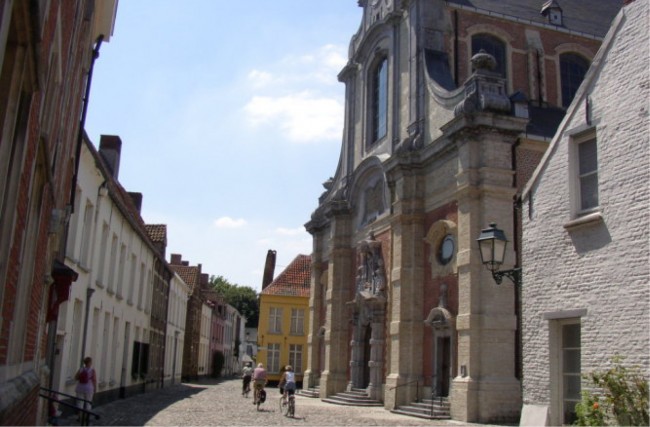
Around the 11th century, religious movements emerged with a desire to return to the origins of Christian belief and turn their backs on the decadence of the clergy. That was the context in which the first Beguines appeared in the Low Countries: religious women who wanted to live simple and chaste lives. In the 13th century, the movement gained the support of prominent women such as the Countesses Joan and Margaret of Flanders. They founded beguinages in cities including Ghent, Kortrijk and Lille. These walled settlements are typical of the Low Countries. Unlike women in closed convent orders, beguines retain their personal freedom. They keep their personal possessions and, since their vows are only temporary, they can return to secular life at any time. In the 14th century, the beguines were accused of heresy increasingly often, which made it necessary for them to associate themselves with nuns or priests. In the Northern Netherlands, most communities disappeared after the Reformation. In Flanders, however, there were several more periods when the beguine movement flourished, for example in the 15th and 17th centuries. From the 19th century onwards, the movement declined. The last Flemish beguine died in 2013, marking the end of an 800-year tradition.
Postel Abbey
 Denise, postel.1.png)
Postel Abbey, located at a crossroads where important mediaeval roads met, was founded by the Norbertine Abbey of Floreffe in the early 12th century. Besides pioneering the quarrying work in the region, they offered hospitality to travellers, giving the monastery its widespread fame as a ‘hospice’ or almshouse. In 1610, Postel grew into an independent abbey with the support of Bishop Maes of ’s-Hertogenbosch and the Governors General, Albrecht and Isabella. In 1797, the French Revolution reached the abbey: the residents were expelled and all their property was confiscated. It was half a century before monastic life resumed, in 1847. A painstaking restoration process followed, resulting in a thriving farm in the 20th century. This is where the famous Postel cheese comes from, which is recognised as a regional product with very popular varieties. The delicious produce is sold at the abbey shop, along with an even greater variety of wares from the abbey’s herb garden, processed at the abbey lab. The renowned pure ginseng is always available. The famous Postel Abbey beer, which also disappeared during the French Revolution, is brewed in different varieties by the company Alken-Maes in Alken.
Averbode Abbey
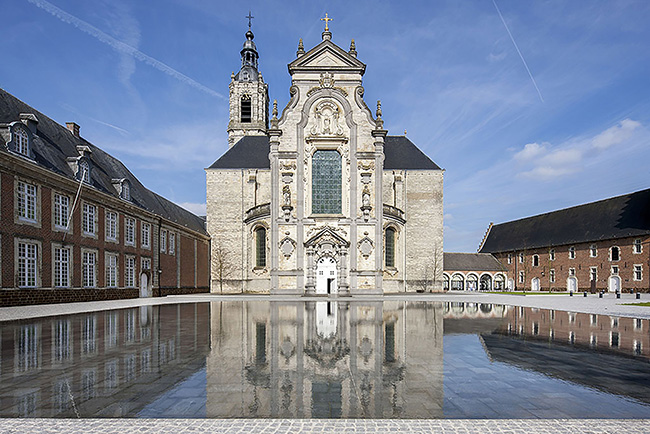
The Norbertine abbey in Averbode was founded in 1134 on the initiative of Arnold II, Count of Loon. It was originally a double monastery, accommodating both men and women. However the women’s section was closed down for good at the beginning of the 13th century, and the nuns moved to Keizersbos. The abbey has suffered many trials and tribulations through the centuries: plundering, fires and the plague, to name but a few. It was even sold after the French Revolution, but the monks bought it back at the beginning of the 19th century. Monastic life resumed and the abbey became the hub of many different activities, such as missionary work, education and a publishing house.
Tongerlo Abbey
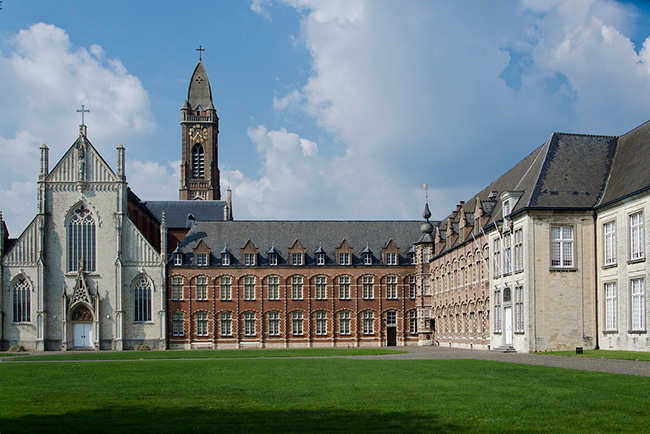
Lord Giselbert asked a few Norbertines from Antwerp to set up a community on his estate in Tongerlo around 1130. Besides farming and active care for the poor, the abbey developed an extensive patronage programme for the arts, culture and science. Since 1545, the abbey has owned a valuable painting: the most beautiful and faithful replica of the Last Supper that Leonardo da Vinci painted in the refectory of the convent of Santa Maria delle Grazie in Milan. Because the original fresco has suffered so much over time that little is left of its original beauty, this ‘Last Supper’ has become all the more valuable. In 1796, the abbey was abolished because of the French Revolution and the community was forced into exile. The abbey’s property was sold. Around 1840, a group of six young monks resumed religious life in the ruins of Tongerlo Abbey. In 1929, a serious fire destroyed most of the buildings. The youngest monks found a home at Leffe Abbey and helped to re-establish this Walloon Norbertine community. Between 1995 and 1999, the abbey church was thoroughly restored and returned to its original, neo-Gothic glory. Since 2003, the statue of the Child Jesus of Prague has graced the abbey church. In 2015, the statue was given its own atmospheric chapel with lovely stained-glass windows.
Hoogstraten Beguinage Church
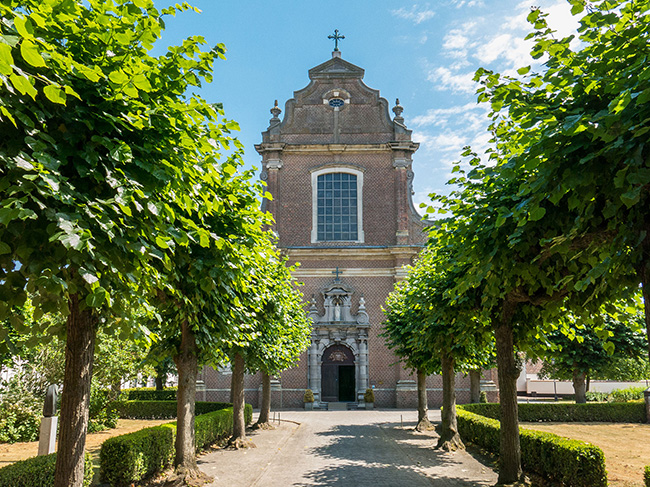
The beguinage in Hoogstraten started out as an infirmary with a chapel and graveyard in 1380. It grew steadily until the Eighty Years’ War broke out in 1567. The devastating effects of war did not spare the beguinage, and in 1604 only two beguines were left. In the second half of that century, however, the community flourished greatly. New houses had to be built, and the beguines embarked on the construction of a new church dedicated to John the Baptist and St Begga.
Lier Beguinage Church
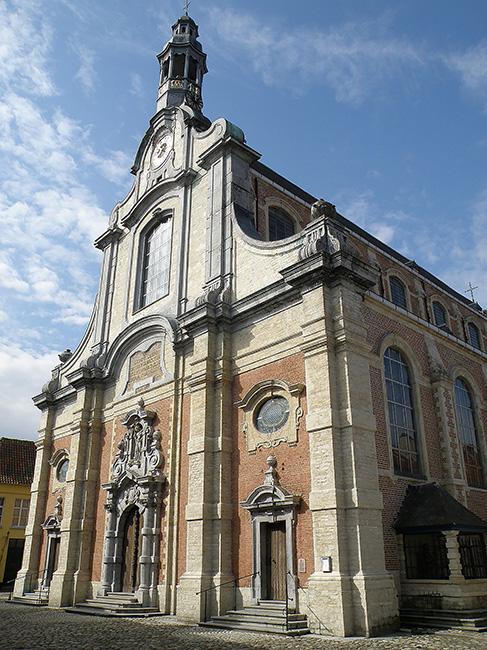
The beguinage in Lier was founded in 1258. It is a typical 13th century beguinage with 11 streets and 162 houses. As the number of beguines increased, various social facilities were installed, such as an infirmary and an almshouse. In 1664, the construction of a new beguinage church began, named after St Margaret, to replace the community’s dilapidated chapel. Despite a lack of funds, the church was completed three years later. However, the upper part of the façade and the belltower were only added a century after that. This time difference is clear from the two different architectural styles: the church is a sober Baroque building but the belltower displays a clear rococo influence.
St Peter’s Church, Turnhout
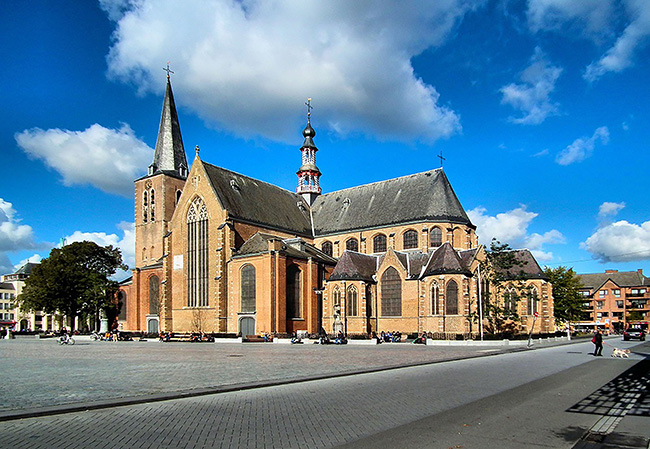
The outside is unusually sober, but inside it is breathtaking. The pièce de résistance is the pulpit, dating from 1862. The pulpit, high altar, sculptures and paintings are dazzlingly beautiful. Once they appeared to be going up in flames. The church tower seemed to be on fire. But the conflagration turned out to be a swarm of mosquitos in the sunshine. That is how the people of Turnhout got their nickname ‘muggenblussers’, or mosquito extinguishers.
St Waltrude’s Church, Herentals
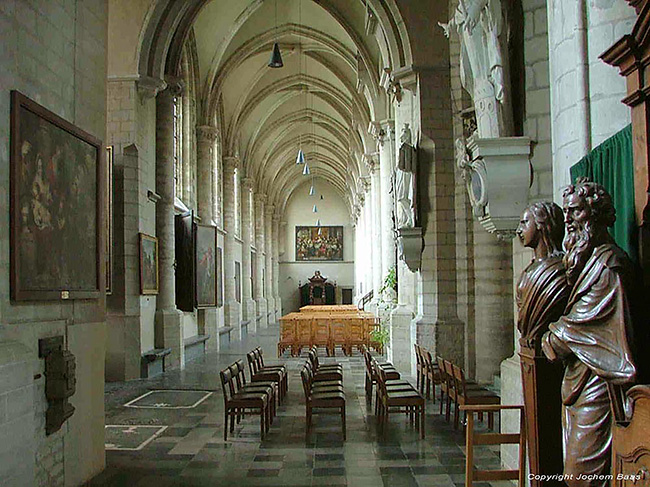
The oldest parts of St Waltrude’s Church date from the 14th century, whereas the choir and nave were designed in the 15th century by the Brussels-based architect Gillis van den Bossche. In 1796, the Brabant Gothic church was given a tower with an onion dome, but it was replaced in 1901 with a vertical spike. The tower measures 33 metres from the masonry to the foot of the cross. St Waltrude’s Church is named after St Waltrude of Hainaut, who founded a convent for women in the 7th century that later grew into the city of Mons.
St Dymphna’s Church, Geel

St Dymphna’s Church, a magnificent example of Demer Gothic, was built in the period 1349-1570. It was originally founded as a pilgrimage church, one of the most beautiful and important reminders of the unique history of Geel, the ‘Compassionate City’. According to legend, the Irish princess Dymphna and her confessor Gerebernus are buried here. The church boasts several Flemish masterpieces, including the St Dymphna retable, the Passion retable and the Apostle retable. The magnificent Renaissance tomb of the Merode family is another stunning eyecatcher.
St Alphonsus Liguori Church, Heist-op-den-Berg
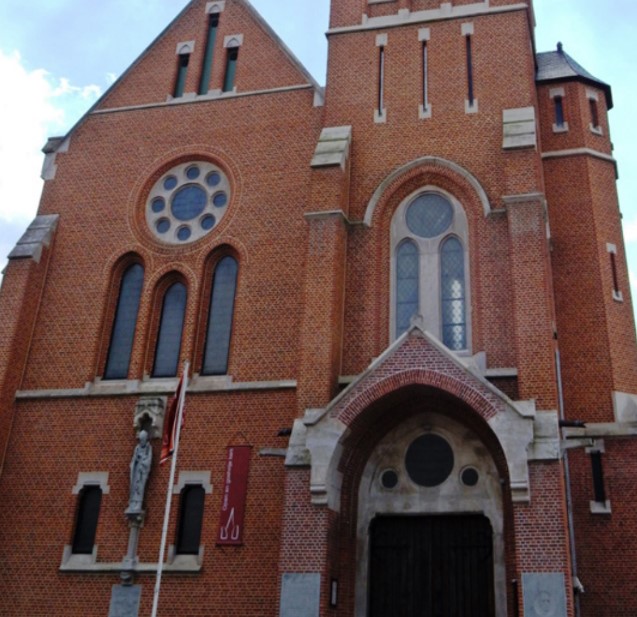
The parish of St Alphonsus was founded in 1873. The first parish priest was E.H. Jacob-Ferdinand Mellaerts, the founder of the Belgian Farmers’ League. In the early years, he had to make do with a temporary chapel. Construction of the church began in 1877, and the first mass was celebrated there in 1879, although the church was not consecrated until 1885. The parishioners themselves paid for most of the building work. To keep costs down, everyone chipped in. Stone from the local clay pits and other materials were provided free of charge by the parishioners. The church is built in Primitive Gothic style. It is 43 metres long and the transept is 20 metres wide. The nave, separated from the sides of the transept by square pillars, has a wooden pointed barrel vault ceiling with cross gables and arches that end on embedded pillars with leaf capitals. The transepts have wooden rib vaults. Baroness Eulalie de Terwagne donated items including three neo-Gothic retable altars in white stone, a neo-Gothic pulpit, also in white stone, with depictions of the four evangelists on the pulpit body, two neo-Gothic oak confessionals and the oak altar rail. Beautiful stained-glass windows, especially behind the main altar, draw the attention and add atmosphere to the church.
Garden Pavilion of Huis Perrekes in Geel (Oosterlo)
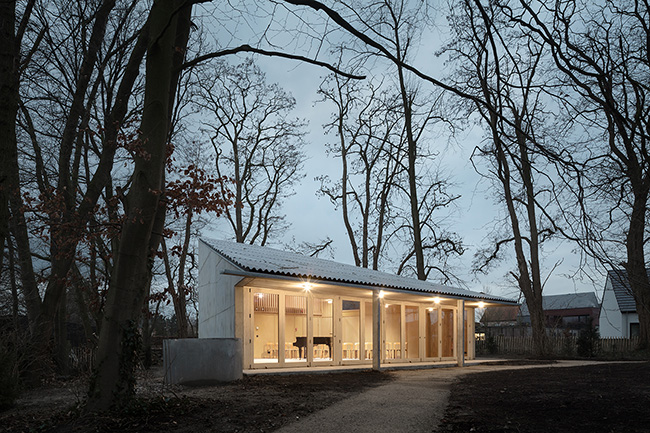
The non-profit organisation Huis Perrekes provides accommodation, care and support for people with dementia from the time of diagnosis to the end of their lives. The association has made a firm choice to connect with the wider world in the broadest sense. This choice is expressed in the design of the publicly accessible garden of the Villa and the Garden Pavilion. The pavilion is a special, welcoming place that provides room for encounters, exchanges and moments of beauty and comfort.
St Lucy’s Church, Oosterlo

St Lucy’s Church in Oosterlo is a neo-Gothic, cross-shaped basilica dating from 1894, built in Oosterlo on the Berthout family grounds, on the probable site of a thirteenth-century chapel. It is a small, intimate church that invites visitors to pause and contemplate matters greater than ourselves. Besides religious services, Huis Perrekes opens up the church in partnership with the neighbourhood to make music and meet each other in the silence and safety of this sacred space.
Church of St Peter and St Paul, Mol

The present church tower of St Peter and St Paul in Mol dates from the end of the 15th century. It is 41.78 metres high and is a typical Kempen brick tower in Gothic style. The nave was rebuilt in 1898 in neo-Gothic style. The entrances and some other parts were finished a little earlier. Above one entrance is a depiction of the ‘Baptism of Christ in the Jordan’. Near the door is a ‘confessional for the deaf’, which was originally located in the sacristy for privacy. The sculpted confessionals and panelling are by Andreas De Swert. Below the altar depicting the Descent from the Cross is a statue of St Francis of Assisi in ivory and Congolese wood. The relic of the Holy Thorn is stored in the tabernacle of this altar. The central altar was consecrated by Monseigneur Paul Van den Berghe on 29 June 2008. It was designed by the architect Fréderic Wattecamps, a partner at Atelier Vanhout in Turnhout, and rendered in Carrara marble and Belgian blue stone. The unity of the altar and lectern is the strongest characteristic of this modern construction that is well-integrated into the interior thanks to the choice of materials.
The parish provides a handy brochure containing details of the stained glass and carvings in particular. In summer, the church usually hosts an exhibition of religious art.
Church of the Sacred Heart, Heist-op-den-Berg
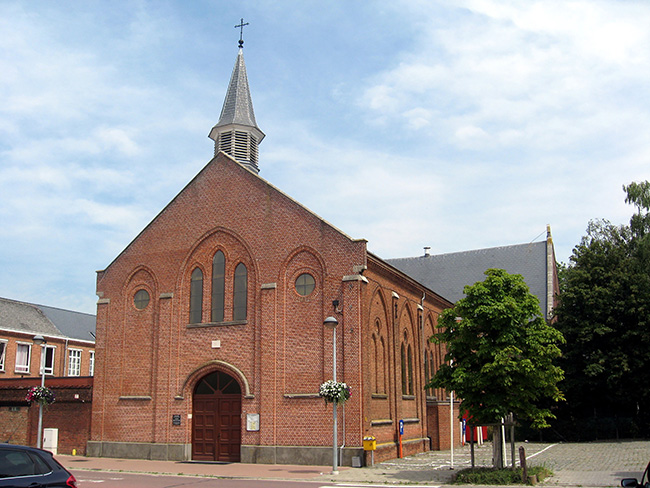
The church was founded in 1913 by means of donations and loans from parishioners and financial support from the first parish priest, E.H. Kinnaer. The place of worship was enlarged into a neo-Gothic aisleless church in 1916 and 1921. A transept was added in 1936. The plastered and painted interior with wooden panelling and a wooden pointed barrel vault creates exceptional acoustics. The Church of the Sacred Heart has neo-Gothic furnishings and 19th century polychrome wooden statues of St Anthony the Abbot, St Barbara, St Catherine of Alexandria and St Roch.
Jesuit church of Lier

The Jesuit church of Lier was founded between 1749 and 1752 on the basis of the plans of Jesuit friar Albert del Plancken of Ename. It is the last Jesuit church built in Belgium was built. The church building is a single-nave longitudinal late baroque church in cruciform shape, built of brick with processing of natural stone. On 29 December 1914 an obus fell in the garden of the residence, causing all the windows of the building fell. The altar was also destroyed by fire at the time. In 1956 it was replaced by a new main altar from the Jesuits from Ghent. During the Second World War the church was spared and since 1982 it stood empty. The Jesuit church together with the convent, retreat house and garden formed one whole. In 1972, the Jesuits sold the retreat house and the walled park garden to the city of Lier to provide accommodation for the Podiumacademie Podiumacademie. In 1986, the church and convent passed into private hands. The monastery became (and still is) a private residence. The church decayed into a warehouse useful for discarded and other material. Maintenance work was no longer carried out there in recent decades. Fortunately, the restoration of the exterior (2008-2009) turned the tide. Since then, the roof, facades and windows have already been restored to pristine condition and the completion of its repurposing as a fully-fledged concert hall further ahead.
Chapel Our Lady of the Field, Hoogstraten

This charming chapel in Minderhout was built in the mid-17th century by parish priest Waltman van Dyck, brother of the famous painter Anthony van Dyck. The chapel of Our Lady of the Acre owes its name to its legendary origins. ‘Where the little chapel now stands, there used to be nothing more than wasteland and scrub with thorns. One day, while playing, a young girl found a ‘clean doll’ under a bush. When she happily showed the find to her mother, the latter rather quickly saw that it was no ordinary play doll and carefully put it away. Great was the surprise when the find appeared to have disappeared the next day. The girl went looking again and found the doll again in the same place near the bush where she had found it the previous day. This miraculous story was told to the parish priest, who decided to bring the doll in procession to the parish church. Up to three times the doll was brought to the church and three times it returned to the wood bush. One knew no better than to build a chapel at the place where Mary clearly wished to be worshipped.’ The legend remains primarily an oral folk tradition, but official documents from 1650 also speak of a ‘miraculous bell-block’ in an ‘old capelleke’. No records have been preserved of the earliest period and the construction of the first chapel. However, the construction of the second chapel in 1650 was documented. It is said that the entire construction of the chapel was paid for with the donations of pilgrims. The foundation stone was laid by Waltman van Dyck. He was to remain pastor in Minderhout for 28 years.
St Peter's church in Testelt
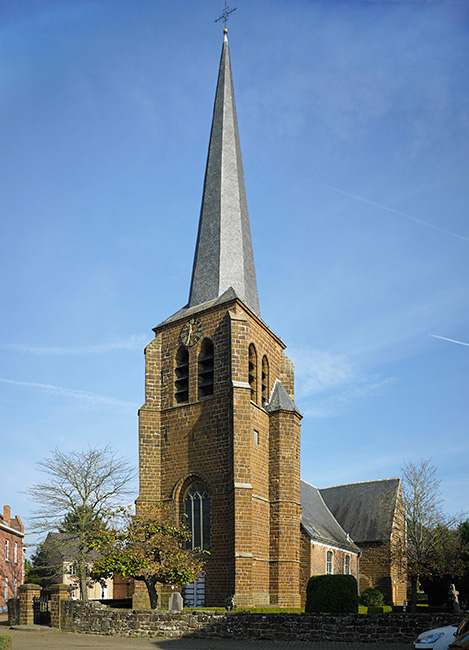
There had been a church or chapel in Testelt since the 12th century. However, the current church only dates from the 14th century. Of this original three-nave Demergothic church, only the choir, the transept and the tower remain. Like many other churches in the Demer valley, you can also see the use of ironstone here. This stone is found in numerous buildings in the region. The church interior is rather austere. The large most recent paintings hanging there are by War Van Overstraeten (1891-1981). As for the statues, two stand out: the 16th-century Pieta and a small statue of the Virgin Mary. There is a special story behind this statue. It originally stood in a chapel next to the Demer. During the war, the retreating Belgian troops blew up the chapel together with the bridge over the Demer. The statue is the only thing that was saved and was given a place in the church. Be sure to take a look at the stained-glass windows. Almost all of them were donated by residents of the village. Their names are listed at the bottom of each stained-glass window, as was customary.
OPZ Geel
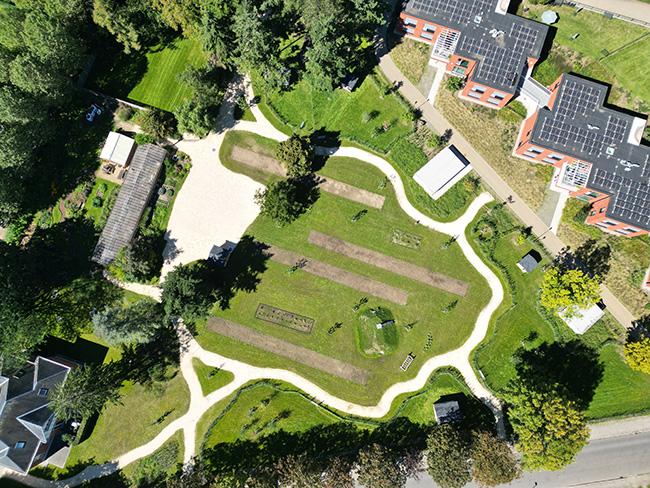
OPZ Geel is a psychiatric care centre that provides specialised care for people who have become stuck in their lives in one way or another. In cooperation with the partners of the Network GGZ Kempen and PANGG0-18, OPZ Geel offers them and their relatives the most appropriate support in the least invasive way, ranging from ambulatory care and crisis counselling at home to residential care. Hospitalisation only occurs when care in one's own context is insufficient or not possible. The care centre is located on a green campus near the centre of Geel. The natural environment has an undeniable beneficial effect on the well-being and recovery process of patients, residents and guests from the Geel Family Care Centre. ‘Den hof’, with its greenhouses and animals, offers tranquillity and forms a comforting and inspiring place.






